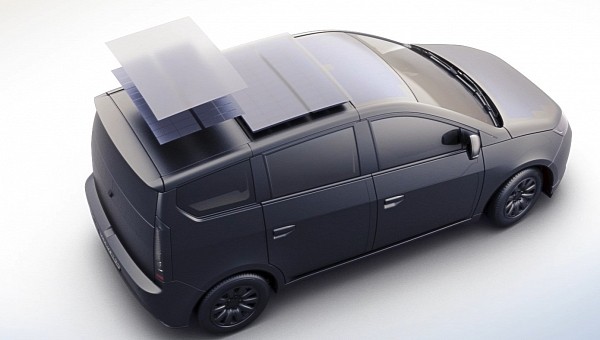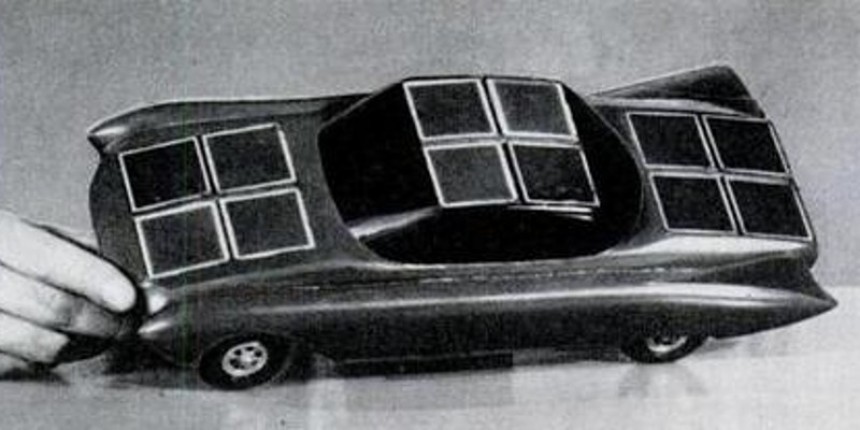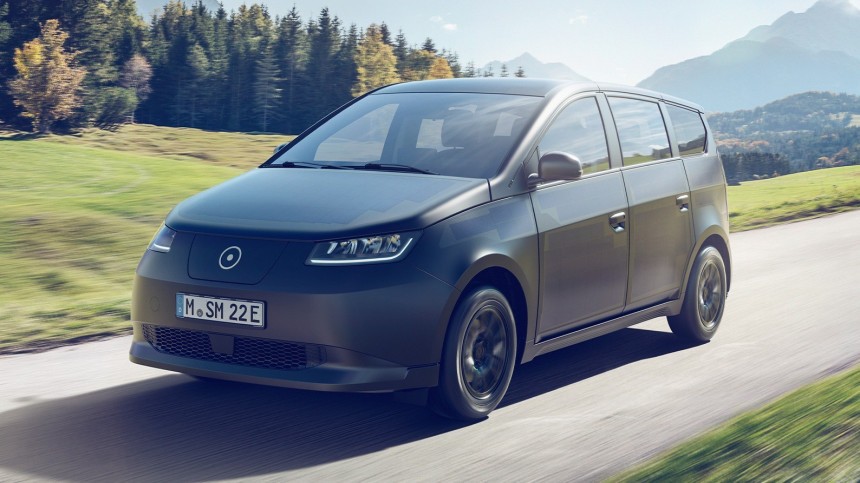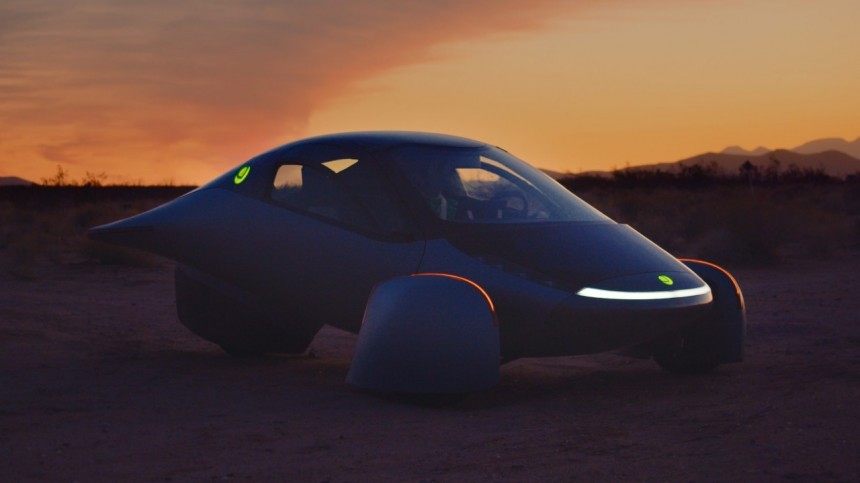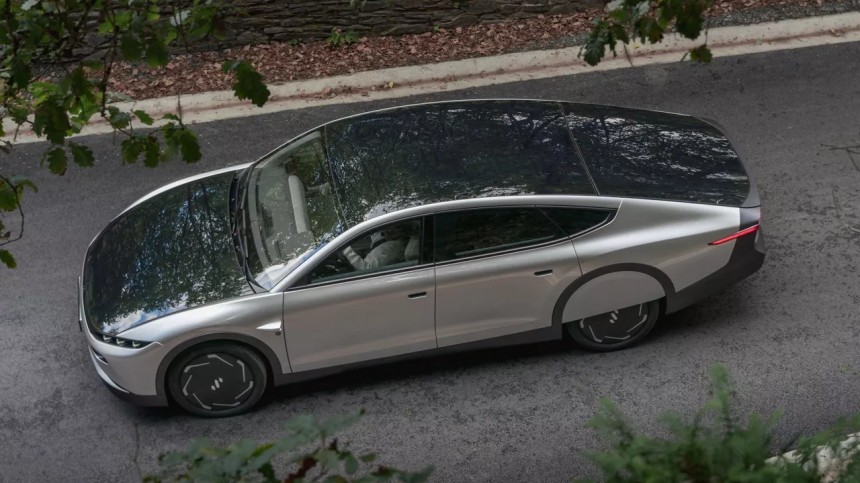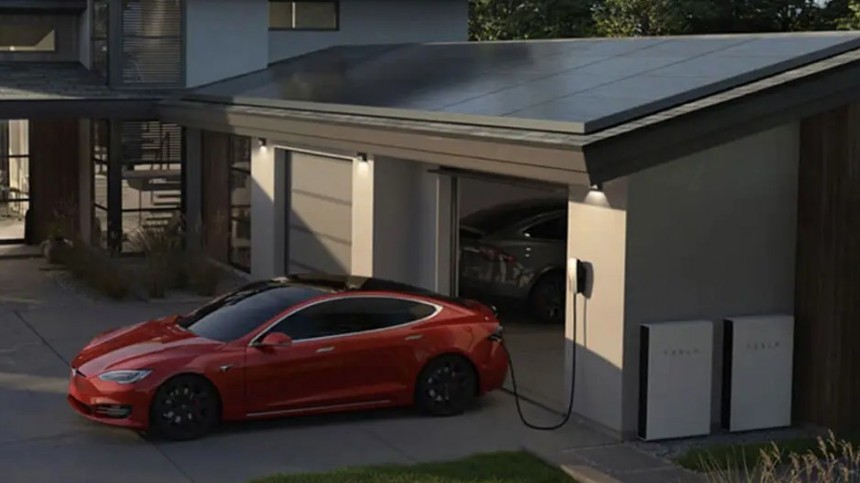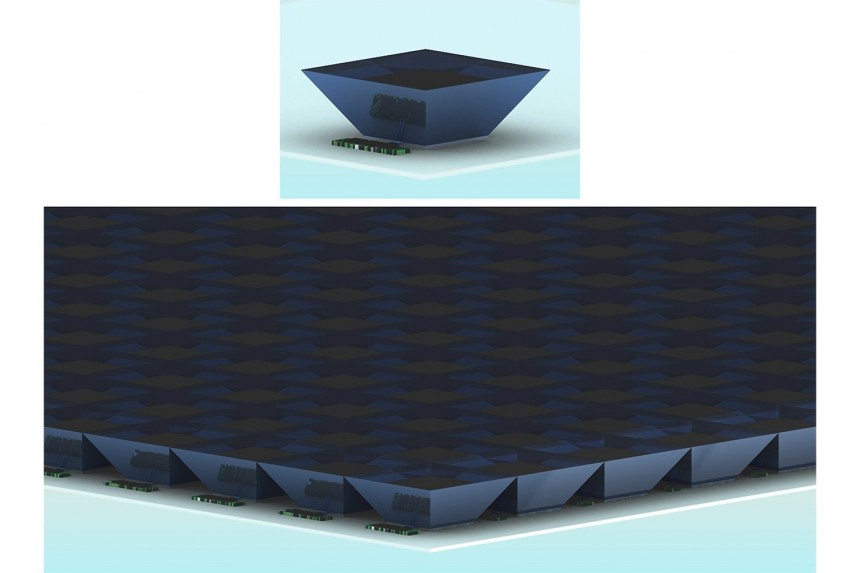Sono Motors, Lightyear, Aptera. These start-ups have already booked tens of thousands of pre-orders for their so-called “solar cars”. But is the solar car for the masses really achievable?
Almost every year I have friends asking me something like “Dude, what do you know about a car that can travel solely on the Sun’s energy? How much does it cost and when will it be available?”
That’s because every year mass media and social media are filled with click-bait titles presenting CARS that break range records on some sort of race for solar CARS.
Never mind these are like UFOs on bicycle wheels, developed by young engineers all over the world, and have nothing to do with proper cars. They are perceived by the public as CARS that are powered by solar energy only.
It looked funny, its 20 miles (32 km) range was hilarious, and its acceleration was ridiculous. But, hey, it worked! The only issue was it lacked usability for a daily commute, so a battery was fitted for powering the electric motor. The solar panels were good to charge a bit of the battery while the sun was shining.
Actually, the idea of a solar car officially started at the General Motors Powerama Auto Show in Chicago, Illinois, in 1955. This is where engineer William Cobb showcased a 15-inch (38 cm) long diecast model named Sunmobile. It was fitted with 12 photovoltaic cells that generated electrical current from a flashlight and was powered a small electric motor.
At that time, GM experts stated that even if the photovoltaics were 100% efficient – if they could transform into electricity all the energy they captured from the Sun – they could provide a maximum of 10-12 hp power. Which is not enough for a real car.
Today’s most advanced commercial solar panels efficiency is between 15 and 20 percent, much more than what it was half a century ago. But the efficiency is too much related to how close to perpendicular the sunbeams are to the photovoltaic cell’s surface or how many clouds are there in the sky and so on.
Besides, the low voltage that solar panels put out simply can’t allow propelling a safe and comfortable vehicle weighing at least a ton, with no battery whatsoever. So it seems that a truly workable solar CAR powered solely by Sun energy is feasible only for the stoned characters of Ashton Kutcher and Seann William Scott from the 2000 comedy Dude, where’s my car?.
A small car, which is lighter, can fit much fewer solar cells, so the small gain in the solar range isn’t worth the effort and cost. A bigger car can be lighter if advanced materials are used for its body, but this can make the car too expensive and cancels the benefit of the solar range increase.
The most common scenario for a solar EV – please notice I’m not using the term “solar car” anymore – is the Sun’s light will charge the batteries a little either when the car is parked in an open space during the day or when the car is driven in a sunny day.
This way the battery will require full charging from a charging point less often than a similar EV with no integrated solar panels. It could lead to pretty good savings or it could mean the commuting car requires a smaller battery.
I really appreciated the pragmatic approach of the German startup Sono Motors for their first model, the Sion. It’s a 5-seater family electric van correctly advertised as “an electric vehicle that generates additional range through the power of the Sun.”
Unfortunately, the starting price tag of €29,900 doesn’t seem to attract the number of buyers needed for Sion to become a viable proposition. At the beginning of 2023, the startup is still struggling to get the funds necessary to start mass production of the car.
Their bad luck was an opportunity for Dutch startup Lightyear to boldly advertise their first car as “the world's first solar car”. And it seems this trick was enough for almost 1,000 customers to pre-order the Lightyear 0 with a whopping €250,000 ($296,000) tag price.
It is a technological pinnacle: for instance, it has four in-wheel electric hub motors and holds the record for the most aerodynamic production car. Unfortunately, at the end of January 2023, Lightyear suddenly suspended production because of “overcoming challenges.”
Its true contender will be the new Lightyear 2, which by January 2023 has already surpassed 40,000 pre-orders. It is scheduled for launch somewhere in 2024 at a starting price of around €40,000 ($42,438). That's six times less than the 0 (Zero), but we have yet to see if the startup will survive.
In the meantime, Aptera Motors, an American startup, is also struggling to raise money for its first car to be finally produced. Wait, did I say “car”? Actually, I like their description: “the world's first Solar Electric Vehicle that requires no charging for most daily use.”
It’s a bit of a marketing trick, but it’s all right for advertising this three-wheeler. Yes, Aptera only got three wheels and two seats, while its UFO appearance is a “love it or hate it” experience – I appreciate its originality, but it really is more of a contender for an electric Smart ForTwo. And they both don’t suit my needs.
It has a composite body and its drag coefficient is even lower than that of Lightyear 0, so the starting price of only $25,900 (€23,800) makes sense. If you’re fine with a two-seat electric vehicle. But this Aptera is still very far away from what I think the definition of a solar EV for the masses is.
In fact, what worries me most is that today, at the beginning of 2023, none of the aforementioned solar EVs has passed the mass-production exam. Sion needs $105 million (€96 million) to start production, Aptera is looking for $50 million (€46 million) to finally start production, while Lightyear is yet to see if it can overcome investors’ reluctance.
The maximum estimated solar range that these three vehicles provide in ideal conditions is as follows:
To my surprise, these values match the statistics. So, the solar range really is something! And I’m like “Dude, now I wish my electric car was a solar EV!” But when I tried to figure out how to convert my Dacia Spring, I came to the conclusion that, at this point, the DIY project would cost me more than buying a much better VW ID.3.
As I speak, my small electric car is in the yard, slowly charging its under-30 kWh battery from the 220V outlet on the wall. Because it’s winter time, I have to fully charge it every 2 or 3 days, as its range drops to 120-140 km (75-87 miles) from more than 200 km (125 miles) in the summer, when I fully charge it every 4 or 5 days.
If it were a solar EV and its solar range were on par with any of the three solar EVs mentioned before, I estimate my costs would slash in half. I’m already paying four or five times less than a similar gasoline city car, so it would be like commuting in a less than 1 liter/100 km (more than 235 mpg) car. Outrageous, isn’t it?
Moreover, the battery would require charging only once a week, instead of two or three times a week. It's just a detail, but it matters a lot to the whole convenience equation. And when I will finally have those solar panels installed on the roof of the house…
Dude, using a car solely on Sun’s energy suddenly looks like free riding is not impossible at all! And the big investment upfront is paying off rather reasonable. I mean, the solar panels on the house are also powering the appliances, so there’s more to the solar lifestyle than meets the eye.
In 2022, researchers created a prototype using 3D printing and different mixes of polymers and glasses. The complex inversed pyramid they built was able to capture 90% of the light that hit the surface, while the output was three times bigger than the incoming light.
Now imagine this state-of-the-art light concentrator fitted on a solar cell. In theory, it could boost three times its efficiency. With a solar EV, this could mean a triple solar range. Can you imagine 100 miles (161 km) a day using solely the sunlight?
For years, all over the world scientists have been creating and testing several photovoltaic concentrator solutions. The basic principle is increasing the diffraction rate of the light being absorbed by these concentrators.
There is only a matter of time – a decade, at most! – until the first workable design and manufacturing technique for such a solar concentrator becomes commercially available. I’m sure that solar EVs will be high on the list of priorities for deploying this technology.
At around the same time, solid-state batteries will become more and more popular. One of the advantages they promise is they need half the size and weight of nowadays lithium-ion batteries to offer the same range.
I can easily imagine a small electric vehicle for in-city car-sharing programs, that is light, has a small solid-state battery, and is fitted with high-efficiency concentrators for the solar panels embedded in its body panels, its windows, and in its upholstery.
Such a solar EV vehicle could harvest not only sunlight but any source of light in the city. So it could be powered entirely by light energy, with no need to charge from an external outlet. All you need is love, err, light (sorry, Beatles hit just popped up in my mind for no reason).
I can even start imagining proper solar cars or trucks and buses that could rely most of the time solely on the Sun’s energy. At this point, you are probably like “Dude, are you stoned, like the guys in that movie?”
But maybe, just maybe, you are more like “Dude, what if he’s right and the solar car for the masses can really become reality?” Now that is surely worth the waiting.
That’s because every year mass media and social media are filled with click-bait titles presenting CARS that break range records on some sort of race for solar CARS.
Never mind these are like UFOs on bicycle wheels, developed by young engineers all over the world, and have nothing to do with proper cars. They are perceived by the public as CARS that are powered by solar energy only.
Let’s get things straight: solar cars aren’t feasible yet
Ten years ago I came across a story about someone who converted an old ’66 VW minibus to electric power and fitted ten solar panels on a platform on the roof. The platform was much longer than the car, and some of it hung over the front and back.It looked funny, its 20 miles (32 km) range was hilarious, and its acceleration was ridiculous. But, hey, it worked! The only issue was it lacked usability for a daily commute, so a battery was fitted for powering the electric motor. The solar panels were good to charge a bit of the battery while the sun was shining.
Actually, the idea of a solar car officially started at the General Motors Powerama Auto Show in Chicago, Illinois, in 1955. This is where engineer William Cobb showcased a 15-inch (38 cm) long diecast model named Sunmobile. It was fitted with 12 photovoltaic cells that generated electrical current from a flashlight and was powered a small electric motor.
Today’s most advanced commercial solar panels efficiency is between 15 and 20 percent, much more than what it was half a century ago. But the efficiency is too much related to how close to perpendicular the sunbeams are to the photovoltaic cell’s surface or how many clouds are there in the sky and so on.
Besides, the low voltage that solar panels put out simply can’t allow propelling a safe and comfortable vehicle weighing at least a ton, with no battery whatsoever. So it seems that a truly workable solar CAR powered solely by Sun energy is feasible only for the stoned characters of Ashton Kutcher and Seann William Scott from the 2000 comedy Dude, where’s my car?.
Does a solar EV even make sense?
Yes, it does. But there is a catch. Or better, a contradiction. For a longer solar range, the electric car must be as light as possible (good luck with that, because batteries are usually pretty heavy), while its usable body area must be as large as possible to fit as many solar cells as possible.A small car, which is lighter, can fit much fewer solar cells, so the small gain in the solar range isn’t worth the effort and cost. A bigger car can be lighter if advanced materials are used for its body, but this can make the car too expensive and cancels the benefit of the solar range increase.
The most common scenario for a solar EV – please notice I’m not using the term “solar car” anymore – is the Sun’s light will charge the batteries a little either when the car is parked in an open space during the day or when the car is driven in a sunny day.
This way the battery will require full charging from a charging point less often than a similar EV with no integrated solar panels. It could lead to pretty good savings or it could mean the commuting car requires a smaller battery.
A really big “IF”
Today, there are three startups that are trying to convince people the “solar car” has a future. Well, this is strike number one: what most people expect from the “solar car” syntagma simply can’t be done. Maybe it’s time to use more appropriate terms, like “solar EV” or “solar battery car”. This way you don’t set unrealistic expectations.I really appreciated the pragmatic approach of the German startup Sono Motors for their first model, the Sion. It’s a 5-seater family electric van correctly advertised as “an electric vehicle that generates additional range through the power of the Sun.”
Their bad luck was an opportunity for Dutch startup Lightyear to boldly advertise their first car as “the world's first solar car”. And it seems this trick was enough for almost 1,000 customers to pre-order the Lightyear 0 with a whopping €250,000 ($296,000) tag price.
It is a technological pinnacle: for instance, it has four in-wheel electric hub motors and holds the record for the most aerodynamic production car. Unfortunately, at the end of January 2023, Lightyear suddenly suspended production because of “overcoming challenges.”
Its true contender will be the new Lightyear 2, which by January 2023 has already surpassed 40,000 pre-orders. It is scheduled for launch somewhere in 2024 at a starting price of around €40,000 ($42,438). That's six times less than the 0 (Zero), but we have yet to see if the startup will survive.
In the meantime, Aptera Motors, an American startup, is also struggling to raise money for its first car to be finally produced. Wait, did I say “car”? Actually, I like their description: “the world's first Solar Electric Vehicle that requires no charging for most daily use.”
It’s a bit of a marketing trick, but it’s all right for advertising this three-wheeler. Yes, Aptera only got three wheels and two seats, while its UFO appearance is a “love it or hate it” experience – I appreciate its originality, but it really is more of a contender for an electric Smart ForTwo. And they both don’t suit my needs.
In fact, what worries me most is that today, at the beginning of 2023, none of the aforementioned solar EVs has passed the mass-production exam. Sion needs $105 million (€96 million) to start production, Aptera is looking for $50 million (€46 million) to finally start production, while Lightyear is yet to see if it can overcome investors’ reluctance.
The solar range conundrum
In order to harvest Sun’s energy, each of the three electric EVs is fitted with a number of solar cells, as follows:- Sion’s body is covered with 456 solar “half-cells” that sum up around 6 square m (64 sq ft) and can generate a maximum of 1.2 kW power
- Lightyear 0 has almost 800 solar cells on the hood, the roof, and the tailgate, totaling 5 square m (54 sq ft), and can generate “more than 1 kW”
- Aptera is covered by only 3 square m (34 sq ft) of diamond-shaped 700 watts solar cells, and some of them are also on the dashboard
The maximum estimated solar range that these three vehicles provide in ideal conditions is as follows:
- Sion is promising up to 245 km (152 miles) per week in ideal conditions, while the average solar range throughout the entire year is estimated at 112 km (70 miles) per week. This gives us a daily estimate of 16 to 35 km (10 to 22 miles)
- Lightyear 0 presumably can add 70 km (44 miles) per day of solar range in ideal conditions
- Aptera can travel a maximum of 64 km (40 miles) per day solely on Sun’s energy in ideal conditions
How much would I save with a solar EV?
My daily commute home-work-home is at most 50 km (31 miles), and sometimes – maybe once a month – I have to drive my EV for around 100 km (62 miles). So, I’m one of the 23.3% of Europeans who travel on average further than 40 km each day.As I speak, my small electric car is in the yard, slowly charging its under-30 kWh battery from the 220V outlet on the wall. Because it’s winter time, I have to fully charge it every 2 or 3 days, as its range drops to 120-140 km (75-87 miles) from more than 200 km (125 miles) in the summer, when I fully charge it every 4 or 5 days.
If it were a solar EV and its solar range were on par with any of the three solar EVs mentioned before, I estimate my costs would slash in half. I’m already paying four or five times less than a similar gasoline city car, so it would be like commuting in a less than 1 liter/100 km (more than 235 mpg) car. Outrageous, isn’t it?
Moreover, the battery would require charging only once a week, instead of two or three times a week. It's just a detail, but it matters a lot to the whole convenience equation. And when I will finally have those solar panels installed on the roof of the house…
Dude, did you hear about solar concentrators?
AGILE is an acronym for Axially Graded Index Lens and it was created by Stanford University engineers. It's basically an optical concentrator that captures rays from all angles and concentrates light at the same output position.In 2022, researchers created a prototype using 3D printing and different mixes of polymers and glasses. The complex inversed pyramid they built was able to capture 90% of the light that hit the surface, while the output was three times bigger than the incoming light.
Now imagine this state-of-the-art light concentrator fitted on a solar cell. In theory, it could boost three times its efficiency. With a solar EV, this could mean a triple solar range. Can you imagine 100 miles (161 km) a day using solely the sunlight?
There is only a matter of time – a decade, at most! – until the first workable design and manufacturing technique for such a solar concentrator becomes commercially available. I’m sure that solar EVs will be high on the list of priorities for deploying this technology.
At around the same time, solid-state batteries will become more and more popular. One of the advantages they promise is they need half the size and weight of nowadays lithium-ion batteries to offer the same range.
I can easily imagine a small electric vehicle for in-city car-sharing programs, that is light, has a small solid-state battery, and is fitted with high-efficiency concentrators for the solar panels embedded in its body panels, its windows, and in its upholstery.
Such a solar EV vehicle could harvest not only sunlight but any source of light in the city. So it could be powered entirely by light energy, with no need to charge from an external outlet. All you need is love, err, light (sorry, Beatles hit just popped up in my mind for no reason).
I can even start imagining proper solar cars or trucks and buses that could rely most of the time solely on the Sun’s energy. At this point, you are probably like “Dude, are you stoned, like the guys in that movie?”
But maybe, just maybe, you are more like “Dude, what if he’s right and the solar car for the masses can really become reality?” Now that is surely worth the waiting.
